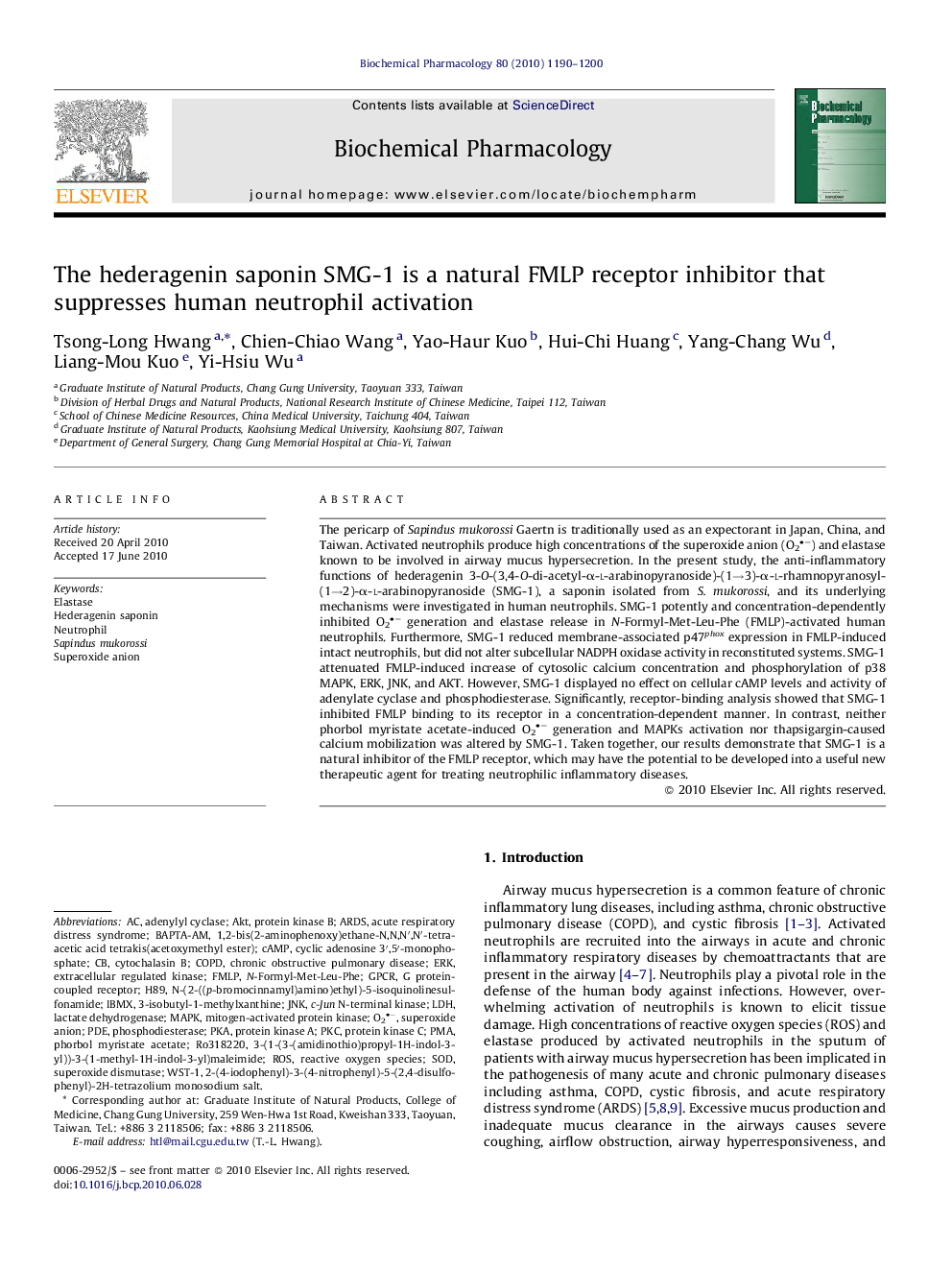| Article ID | Journal | Published Year | Pages | File Type |
|---|---|---|---|---|
| 2513298 | Biochemical Pharmacology | 2010 | 11 Pages |
The pericarp of Sapindus mukorossi Gaertn is traditionally used as an expectorant in Japan, China, and Taiwan. Activated neutrophils produce high concentrations of the superoxide anion (O2−) and elastase known to be involved in airway mucus hypersecretion. In the present study, the anti-inflammatory functions of hederagenin 3-O-(3,4-O-di-acetyl-α-l-arabinopyranoside)-(1→3)-α-l-rhamnopyranosyl-(1→2)-α-l-arabinopyranoside (SMG-1), a saponin isolated from S. mukorossi, and its underlying mechanisms were investigated in human neutrophils. SMG-1 potently and concentration-dependently inhibited O2− generation and elastase release in N-Formyl-Met-Leu-Phe (FMLP)-activated human neutrophils. Furthermore, SMG-1 reduced membrane-associated p47phox expression in FMLP-induced intact neutrophils, but did not alter subcellular NADPH oxidase activity in reconstituted systems. SMG-1 attenuated FMLP-induced increase of cytosolic calcium concentration and phosphorylation of p38 MAPK, ERK, JNK, and AKT. However, SMG-1 displayed no effect on cellular cAMP levels and activity of adenylate cyclase and phosphodiesterase. Significantly, receptor-binding analysis showed that SMG-1 inhibited FMLP binding to its receptor in a concentration-dependent manner. In contrast, neither phorbol myristate acetate-induced O2− generation and MAPKs activation nor thapsigargin-caused calcium mobilization was altered by SMG-1. Taken together, our results demonstrate that SMG-1 is a natural inhibitor of the FMLP receptor, which may have the potential to be developed into a useful new therapeutic agent for treating neutrophilic inflammatory diseases.
Graphical abstractFigure optionsDownload full-size imageDownload as PowerPoint slide
